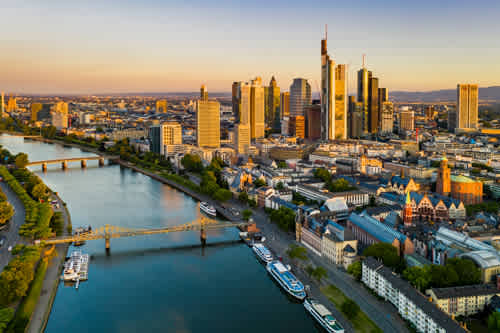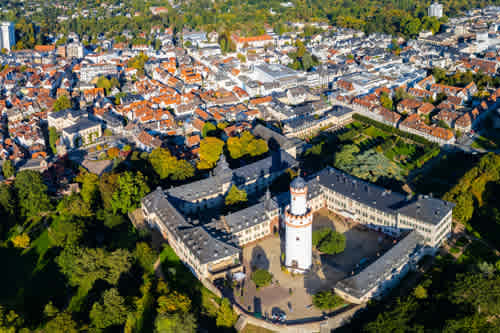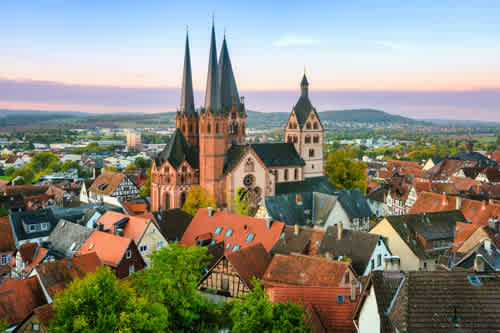If it is culture, nature, history and R & R, Wiesbaden is the place to be. Visit Wiesbaden – you deserve it!
About Wiesbaden
A great way to start your tour when arriving to Wiesbaden is to stop at a local café or pub and enjoy the local currywurst sausages and apfelweine, a unique wine that it is made from apples and not grapes! Tour this capital city of the State of Hesse by visiting renown landmarks, catching “Kodak moments” along the low banks of the Rhine and from the funicular as you ride up to the top of the Neroberg hills. As well you cannot leave this enchanting city without shopping on Wilhemstraße Boulevard, one of Germany’s most popular shopping streets.
On the confluence of the Rhine and Main rivers, a short distance from Frankfurt am Main, is the city of Wiesbaden, capital city of the State of Hesse.
A major landmark of the city is the magnificent and large Biebrich Castle (Schloss Biebrich) which is on the banks of the Rhine. The impressive Baroque residence was built at the beginning of the 18th century and until the mid-19th century served as the residence for the Duchy of Nassau.
After being heavily damaged during WWII the palace was taken over by the municipality of Wiesbaden and as such is used to this day, for various official purposes including events and conferences. The gardens surrounding the palace were cultivated and landscaped to create an extensive park. At one point a lake was added and the Mossburg fortress was built.
One of the oldest preserved buildings of Roman origin is The Pagan Wall (The Heidenmauer) also called the “Roman Wall” from the 4th century AD with the picturesque wooden gate which was added in the Wilhelmine era in 1902. A year later an arch was added to connect to the municipal bathing & spa building – the Kaiser Friedrich Bad.
Built on top of a burnt-out church stands the neo-Gothic Marktkirche (Market Church) with the almost 100 meter-high spires. You can climb the stairs to the Carillon Tower which you can hear about five times a day - 49 bells, weighing from 13 kg to 2,200 kg, all rung by hand.
The Wiesbaden Museum has two distinct sectors – one is art and the other is natural science and history! The permanent art collection is divided into three exhibit halls with art from the 12th century to the present and includes the Old Masters, Classical Modernism and the Modern and Contemporary Art Collections. The additional wing which was inaugurated in 2013 exhibits general geology and mineral collections and the natural history collections of the Duchy of Nassau and the present State of Hesse.
One of Wiesbaden's landmarks is the Nerobergbahn (funicular railway) which climbs from the Nero Valley up the Wiesbaden hill for a lovely panoramic view. Hard to believe that a “vintage version” of the railway cars was operated in the days of Kaiser Wilhelm.
Do you know that there is a wine that is made with apples instead of grapes! There is and Wiesbaden makes its own traditional apple wine (Apfelweine), celebrated at apple wine festivals as well as, needless to say, served in the city's restaurants and pubs.
Secret: If the fermented apple liquid is under 8.5% ABV (alcohol by volume) then it is considered apple cider but if the apple juice is over 8.5% ABV – then it is called wine. To munch along with your apfelweine, ask for a serving of currywurst sausages, especially popular in Wiesbaden.
Just like Wiesbaden is known for its apfelweine, Rüdesheim am Rhein, a mere 25 km from Wiesbaden, is known for its wine and if you don’t want to imbibe then try a cup of Rudesheim coffee. But more about that another time.
Popular Itineraries
Traveled by thousands
Wiesbaden Hotels
by

Attractions in Wiesbaden
- Kurhaus, Wiesbaden
- Historic Center, Wiesbaden














 Travel Perks
Travel Perks